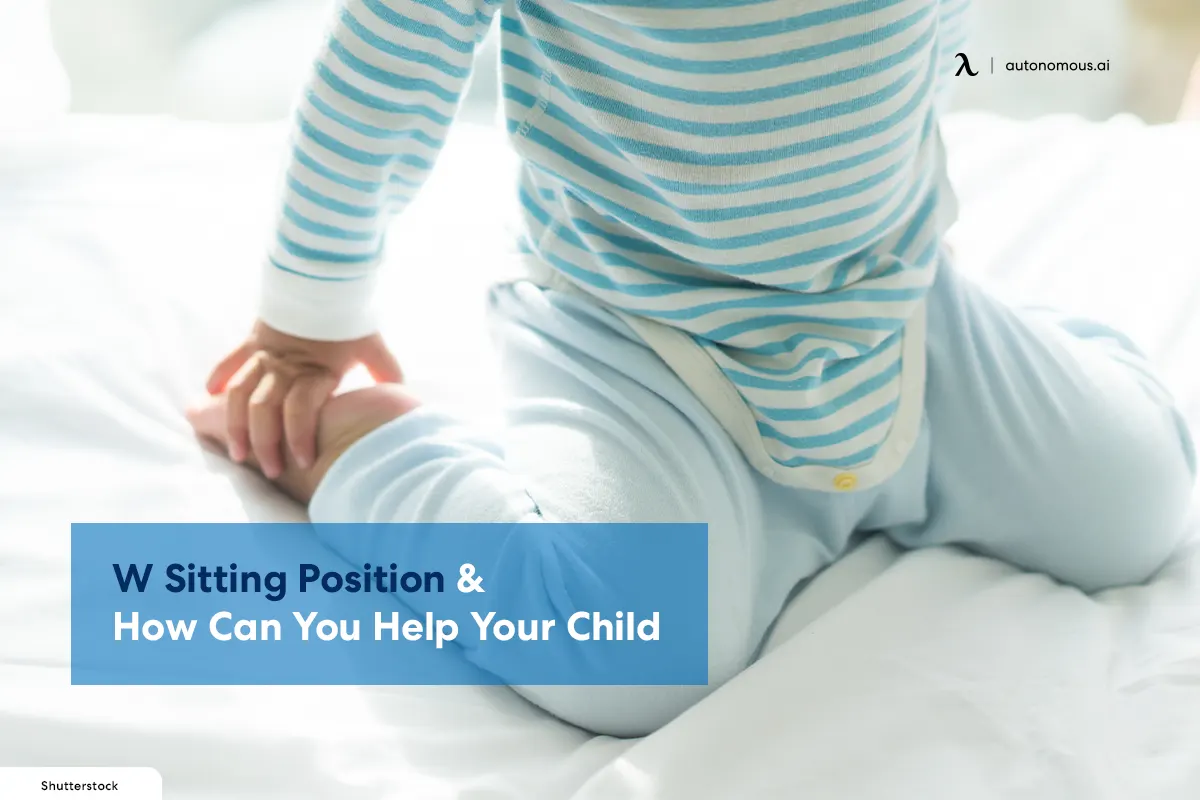
Becoming a first-time parent is overwhelming in so many ways. You learn about new habits of your kid, worry about them, and try to shape them into the best and healthiest possible versions of themselves. While we often hear about the repercussions of excessively saying no to your kid, you also need to make some amendments to their behavior for better physical and mental health. A healthy body function and growth is one such thing. Since we pay enough attention to diet, making all kinds of foods and adding all nutrition groups into their foods, we often pass on the importance of physical wellness in a kid's early years.
From the posture they practice to the healthy physical regimen they follow, each thing combines to play a huge role in the musculoskeletal wellness of your child. One such thing that we as a parent tend to ignore is the W sitting position, a universal practice for children worldwide. Since you might not see W-sitting in adults as common as in kids, we tend to count it as flexibility of your kid's muscles, but the truth is there are many dangers of harmful W-sitting position side effects which are unrealized. In this article, you will know all the effects of W sitting and how to minimize its dangers in growing kids.
What is W Sitting?
Yes, your child does that even if you think they don't. w sitting is when your child sits on their bottom, placing all the weight on the butt while their knees and feet are bent and positioned outside the hip alignment. This position is common and highly practiced by toddlers when they play, learn, talk, eat, or spend time sitting on the floor. The entire sitting position makes the shape of a letter W hence the name W sitting position. Now the question is how bad is W sitting, and what are the dangers of it?

Why is W sitting Bad?
Changing positions and moving when sitting is common, and children with those tiny bodies are always energetic and restless. But the trouble arises when your kid stays in the same position for a longer time, especially if their go-to sitting position is the W sitting position. From a growth, development, and wellness point of view, there are many issues associated with w sitting. Here are some negative impacts of w sitting in children.
Hip Dislocation
No two children are the same. Some are weaker, have poorer diets, and are genetically with weaker bones. Sitting in the w position can cause hip dislocation problems in such children. This dislocation may occur in the early years or sometimes stays at the edge and occurs later in life.
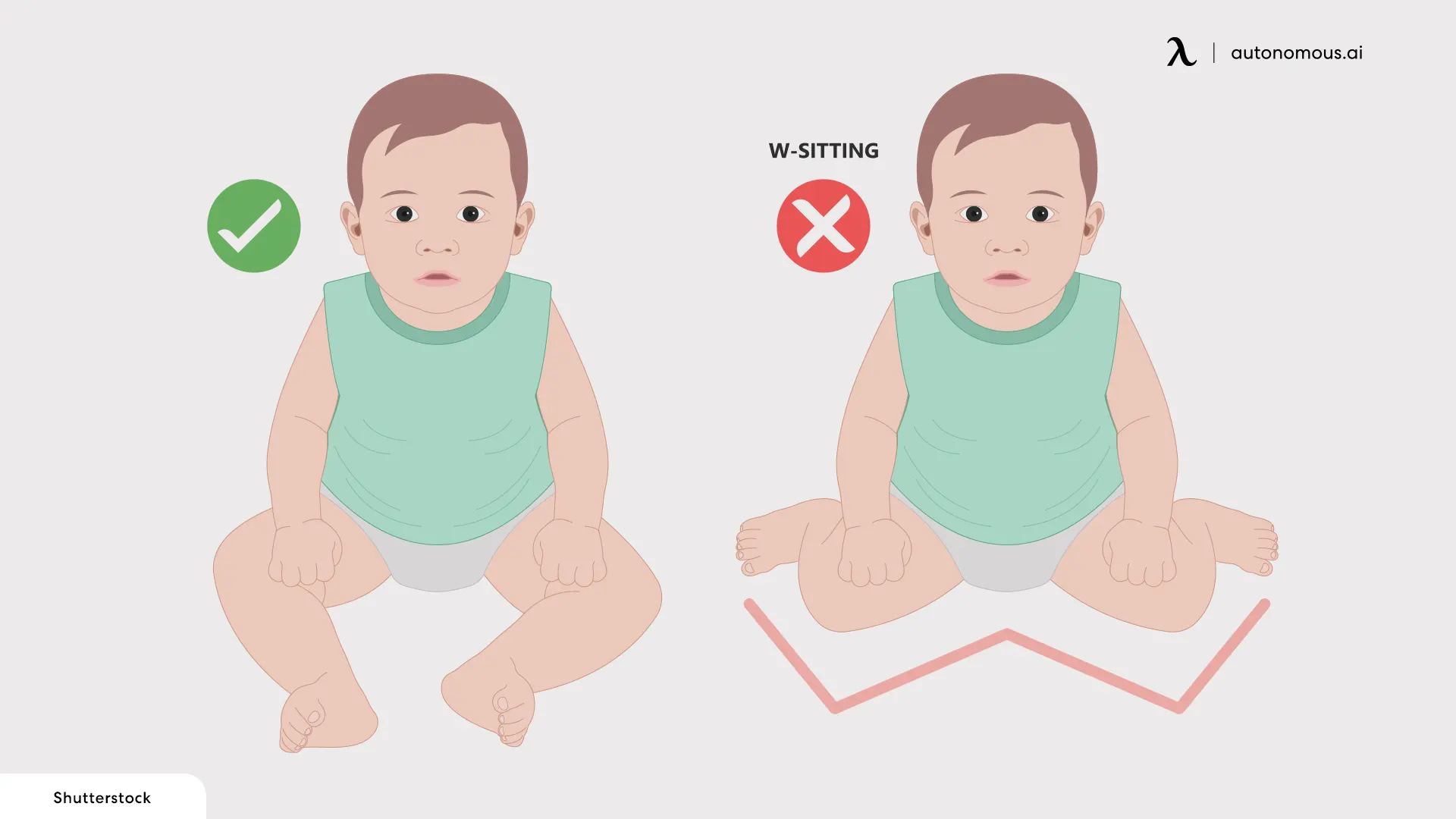
Limited Core Strength
As a person sits in a w position, their body is easier to remain upright. This eliminates the need to use core muscles engaged much more in other sitting postures. Hence the development of core strength is minimized.
Lack of Cross Body Movements
When a child practices the W sitting position, they are less likely to move their upper body as the sitting angle does not allow that much flexibility. This can alter the twisting flexibility and cause stiffness in the spine emerging from those early years.
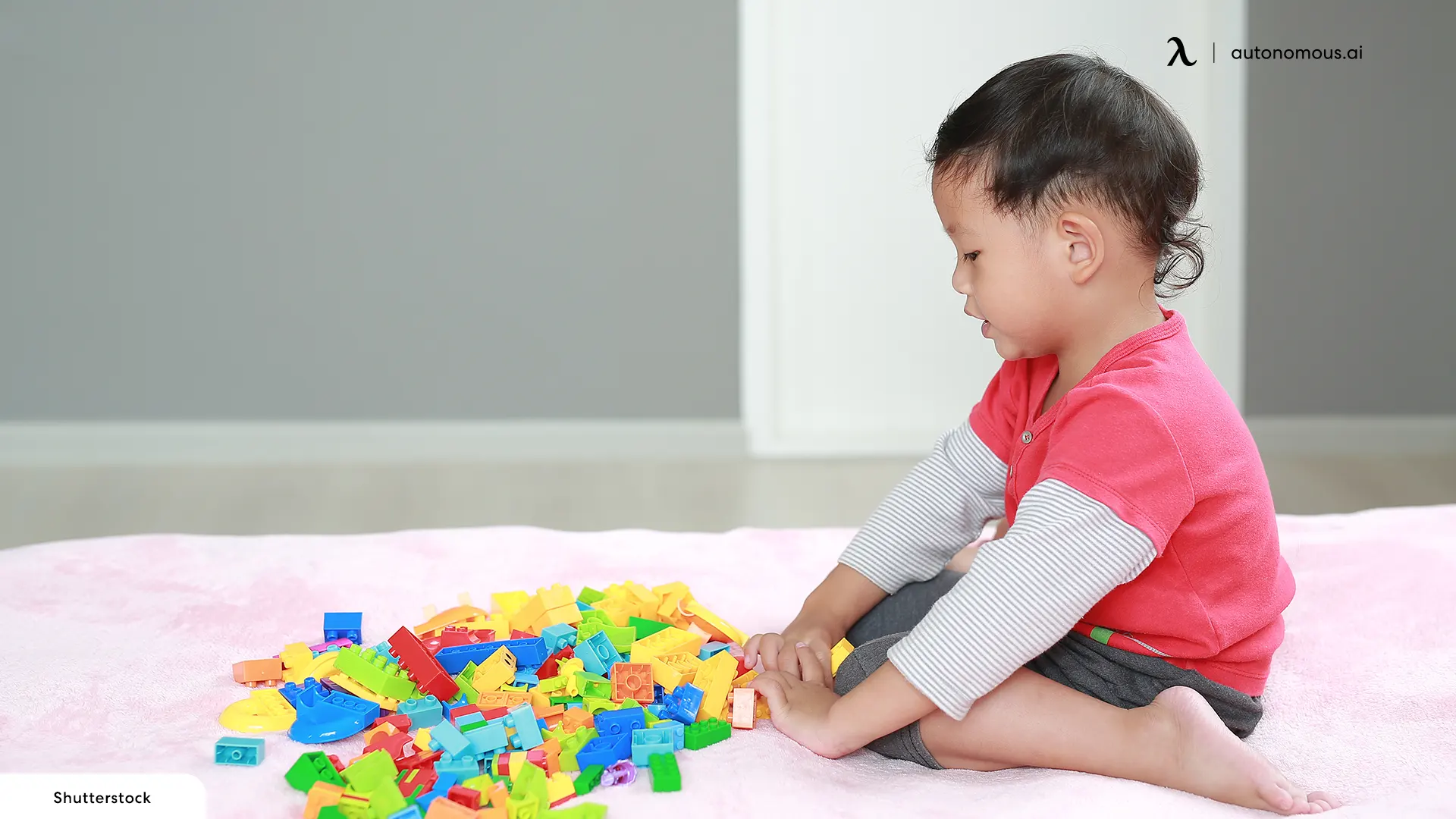
No Hand Preference
When seated in a W position, a child displays excessive trunk stability and control. Either hand can be used to carry out activities with ease.
Increased Muscle Tightness
Sitting in a W position will exacerbate hip, knee, and ankle tightness in children predisposed to muscle tightness or hypertonia. Long-term W-sitting can cause the muscles in the legs to shorten and tense, leading to "pigeon-toed" walking. This may subsequently affect the child's capacity for performing numerous gross-motor tasks, including jumping, running, climbing, or bicycling.
How to Stop W Sitting?
Children are not conscious when it comes to practicing the best health practices for them; it needs to be added into their routine to follow the right sitting posture hence preventing injuries on a deeper level. If your child practices the W sitting position from time to time but equally sits in other positions, then you need to let it go. However, if you see them following this sitting posture excessively, proper measures must be taken. Here are some ways to practice a healthy sitting routine with kids.
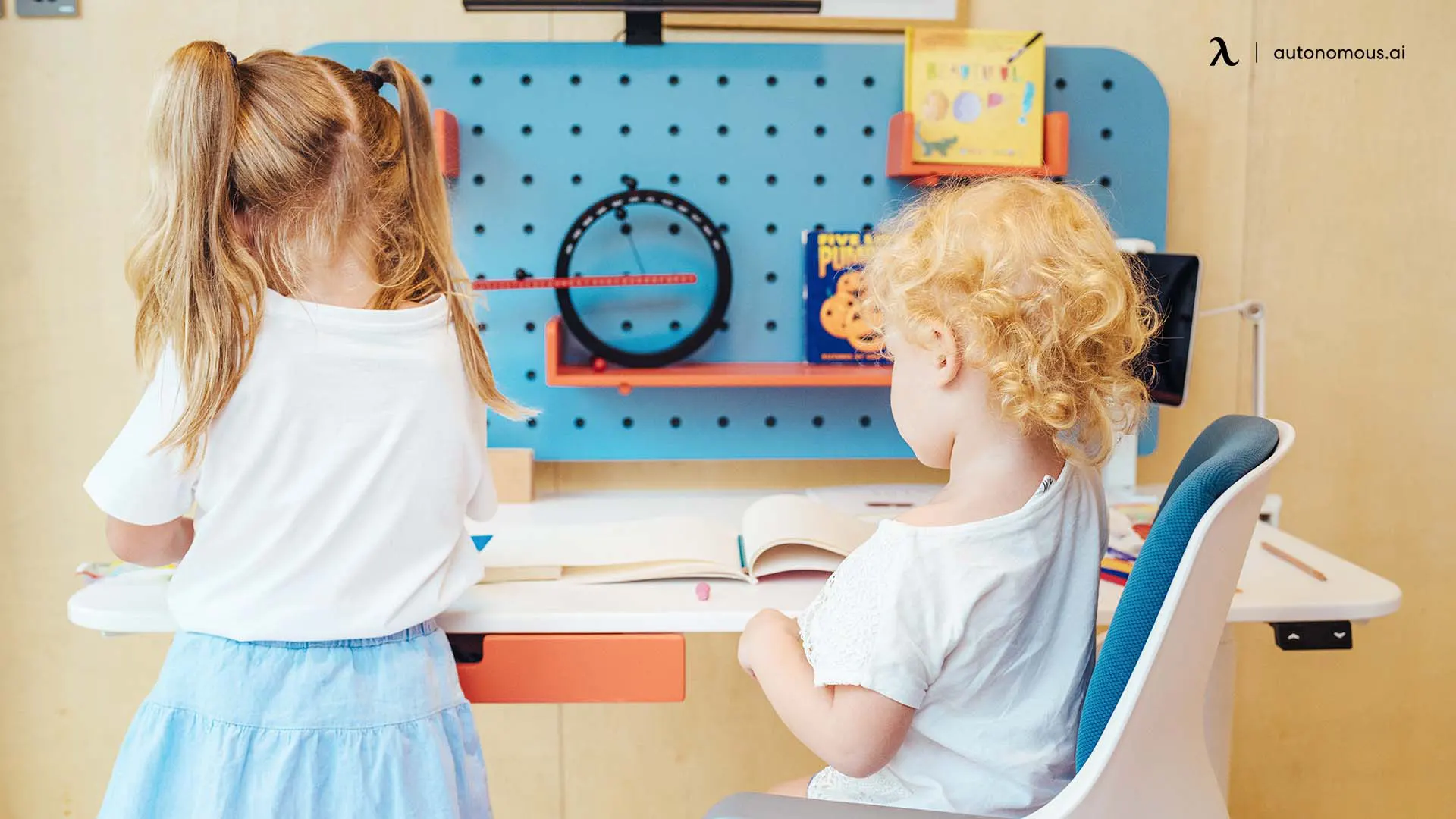
Desk and Chair
If they love sitting on the floor, give them something to divert their mind. How about their little corner with a great desk and chair? Several adjustable children's desks follow all the ergonomic needs of a growing body. Sitting in an ergonomic chair or any study chair for students with the right children's table height, you can eliminate the need to repeatedly dwell in W sitting position. They can also reap the other benefits of an ergonomic workspace, such as better active energy, improved posture, and dedicated study space.
Standing Desk
Sitting gives rise to multiple health issues over time, and using a standing desk is a great way to minimize some lazy time from everyone's routine. While standing desks are common in offices and for gamers, there are also children standing desks with a short height range. Opt for a desk that reaches their ideal height and lets them play while standing rather than sitting. Soon you will observe your kid being more active and healthier.
FAQs
Why Is W Sitting a Sign of Autism?
As much as W sitting is considered a sign of autism, on its own, w sitting cannot be the sole declarer of autism in children. Since w sitting minimizes the use of core strength in children, it is considered a sign of a weaker core.
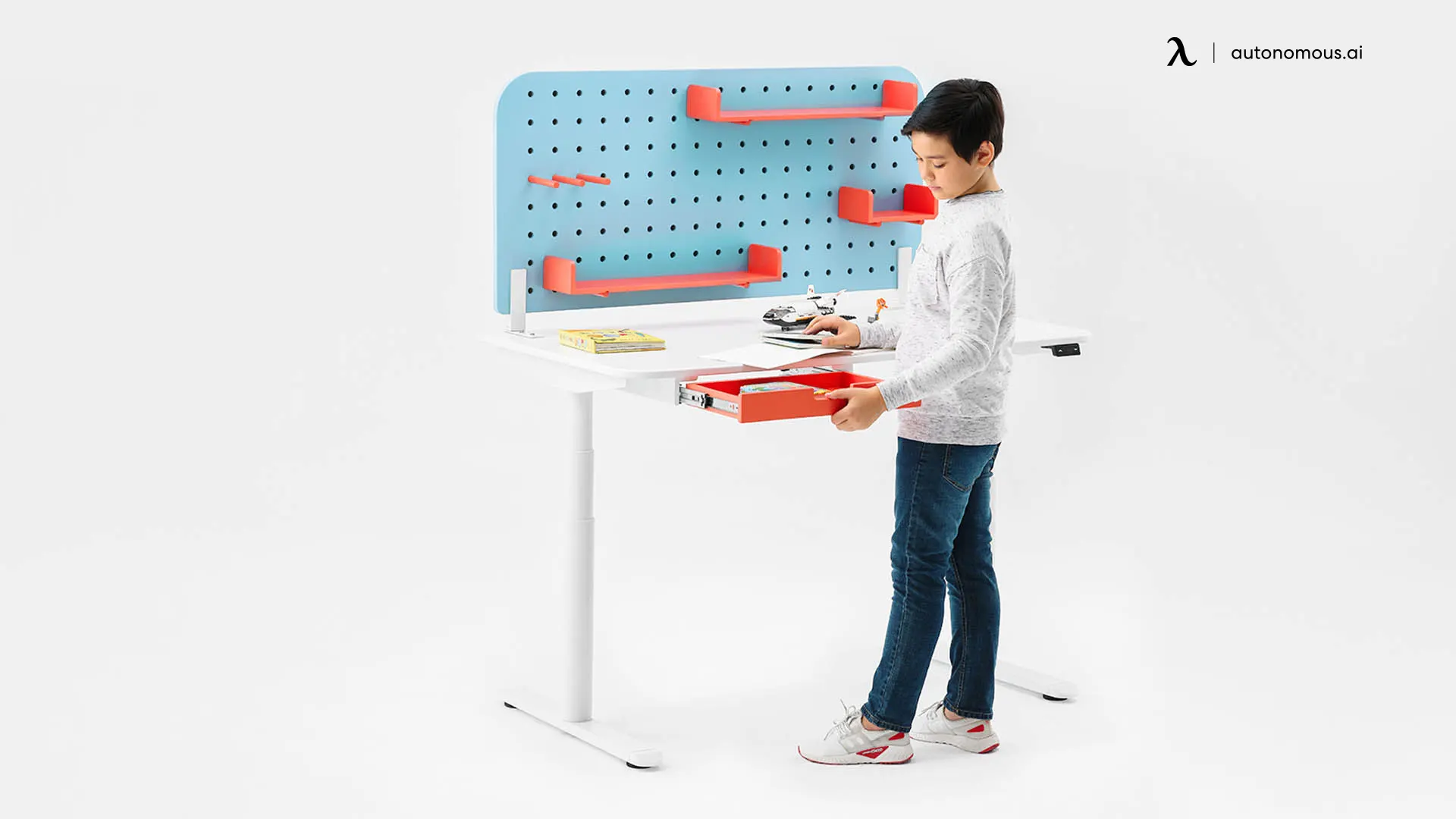
Does W Sitting Cause Knock Knees?
With W sitting in the growing years, kids can experience the muscles around the legs and the hips becoming tighter and shorter; hence the kids can develop a pigeon-like gait. The knocked knees cause this as the knees undergo long periods of stress when a child sits in a w position.
At What Age Is W-Sitting A Problem?
In early years such as 3 or less, w sitting can be ignored, but if a child persists in sitting in this position for longer, or W-sitting position in adults can cause problems in life.
Spread the word
.svg)







